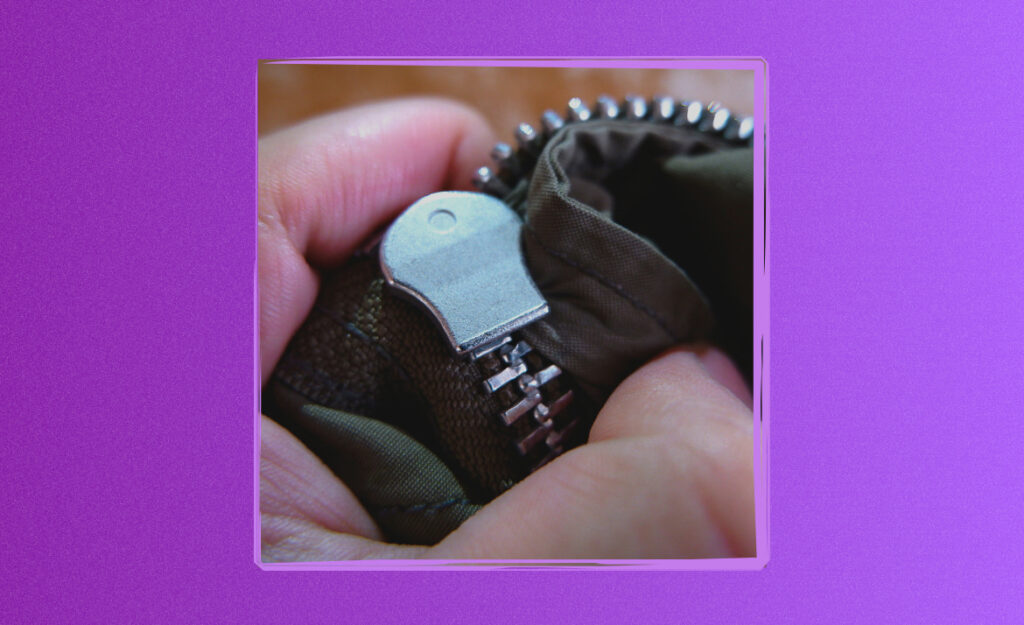
Greeting someone by name creates an immediate connection, but remembering names isn’t natural for everyone. Most people stumble, draw a blank, or hesitate after an introduction. You can reliably improve this skill with targeted techniques.
Names anchor relationships, both personal and professional. Demonstrating real recall makes interactions smoother and builds rapport. Respect is communicated each time you get it right, opening doors and lifting confidence on both sides.
This article presents concrete strategies, scripts, and mini-scenarios that go beyond theory. You’ll see actionable memory steps, everyday analogies, and social scripts you can apply today. Dive in to discover the best remember names tricks for lasting impressions.

Stop Glasses from Fogging: Solutions for Clear Vision on the Go
Discover proven tips to stop glasses fogging while you're out.Start Strong: The First Five Seconds Set the Tone
Seizing the moment right after hearing a name cements it in memory. The opening seconds after meeting shape the entire tone and flow of conversation. Commit to focused action early on.
Repeat the person’s name back immediately: “Nice to meet you, Amanda.” This single move doubles your recall odds. Doing it aloud tells your brain, “Store this—it’s important.”
Visual Anchors Make a Name Stick
Pair new names with a defining visual cue: hair color, glasses, a green scarf. For example, picture ‘Amanda with the blue glasses.’ Your mind latches onto vivid, specific images much more easily than plain words.
If Amanda laughs as she greets you, mentally tag her as “Amanda the cheerful.” Bridging a name with a concrete characteristic strengthens recall for the next encounter.
Imagine a post-it note on someone’s shoulder with their name; this goofy mental picture acts as your personal snapshot. Snap a quick mental photo and repeat the name to yourself while glancing at the feature.
Embed the Name in Contextual Conversation
Embed the name in context early: “Amanda, where did you say you’re from?” Using the name during small talk places it in a memory chain, so subsequent details reinforce the original introduction.
Try mixing the name in twice during your first three exchanges. “Amanda, what inspired you to attend today?” Context builds extra hooks in your memory, turning remembering from a single task into a woven habit.
Close the conversation with another use of their name: “Great talking, Amanda.” Repetition in context cements names in long-term memory by attaching emotion and intent, not just sound.
| Step | Example Phrase | Memory Technique | Takeaway |
|---|---|---|---|
| Hear | “It’s Amanda.” | Focus and repeat aloud | Repeat back for retention |
| Visualize | N/A | Pick a striking feature | Link the name to a detail |
| Embed | “Amanda, what do you do?” | Slip name in conversation | Context improves recall |
| Repeat | “Great seeing you, Amanda.” | Meaningful sign-off | Ends strong and memorable |
| Review | N/A | Brief recap after conversation | Solidifies name and context |
Use Personal Association for Deeper Retention
Linking new names to personal experiences sharpens recall. Associating someone’s name with familiar places, memories, or stories personalizes the process and makes each name unique in your mental filing cabinet.
Connect a name with a famous figure, a friend, or something meaningful. When you meet “Tom,” recall Tom from your high school soccer team, for example. Let your brain find a natural bridge.
Personal Stories Cement Names Into Long-Term Memory
Share a quick fact or story about yourself when introduced; invite the other person to do the same. “Tom, I also love soccer!” Linking their hobby or trait to their name works wonders.
- Connect a name to an old friend. Doing so forges familiarity and speeds up the memory process.
- Imagine the person into a scene—like in a coffee shop with your friend Tom. Visually filing Tom into a scenario ‘concretizes’ the name.
- Use memory hooks from past experiences. Match traits or interests with those you value or remember.
- Verbalize connections: “Tom, you remind me of a Tom I played basketball with.” This makes the link verbal and memorable.
- If the name matches a favorite celebrity, say so. “Tom, like Tom Hanks!” Personal associations recode memory for easier access.
Names memorized with stories or emotion stick far longer than ones heard in passing. You’ll find yourself recalling them at the next encounter with ease.
Checklist for Quick Name Recall Using Associations
- Draw a link to someone you know; this speeds up retention.
- Pair a face with a real or imaginary place for context depth.
- Frame an association out loud to strengthen the connection.
- Add an interesting detail for context and color.
- Actively recount the association after the conversation.
Personalizing the process transforms awkward exchanges into memorable, engaging ones. People subtly notice—and appreciate—your effort.
Chunking Makes Big Groups Manageable
Breaking names into smaller, bite-sized sets—known as chunking—enables memory to handle more information. Instead of approaching a group as one overwhelming task, divide and conquer with strategic segmentation.
Apply this strategy: focus on three names at a time in any group situation. Tackling micro-groups keeps your mind sharp, making recall of multiple names practical and efficient.
Divide the Room: Micro-Groups for Event Navigation
At a conference, separate participants into distinct segments—by table, shared interest, or role. Meet and greet each segment, then pause to review only those names before moving on. This closure makes space for new information.
Mental visualization can help: picture each micro-group as a basketball team on the court. Once the game (interaction) wraps up, review the roster (their names), then mentally ‘bench’ them before moving on.
On a networking app, make clusters by topic. For each message exchange, link the person’s name to their specific question or comment. Regular online chunking sharpens your event performance in the real world.
Scripted Sequences for Speed Learning
Try a script when meeting several people at once: “Alex, Sara, Justin—nice to meet you three.” Make eye contact with each as you recite their name. Feedback and visible affirmation reinforce your script and their positive impression.
If you forget or miss a name, pause, admit it, and ask again right away. “Sorry, which one was Alex?” This respectful recovery script keeps group introductions stress-free and fosters authenticity in social settings.
Follow up the encounter by listing names aloud: “Alex works in finance, Sara in marketing, and Justin’s from Dallas.” This quick context check improves your ability to recall names and details days later.
Repetition and Spacing: The Science of Lasting Recall
Repetition at the right intervals ensures names stay fresh. The key isn’t sheer frequency but optimal spacing. Remind yourself of each name during and after interaction, with quick checks over time to strengthen neural connections.
Schedule Your Recaps for Efficiency
Five minutes after leaving an event, recite the names from memory. Spacing this mental review trains your brain to stabilize the information. Add reminders, journals, or contact notes to prompt yourself a day or week later.
Write a brief summary: “Met Maya—wore orange, taught yoga.” This method cements memory through active recall, aligning with proven neuroscience behind the remember names tricks approach for enduring results.
Use calendar reminders for follow-up. Setting a phone alarm for one day later nudges you to mentally revisit each person: “Who did I meet—what were their standout features?”
Social Scripts in Digital and Physical Contexts
Send a follow-up message: “Great meeting you, Maya!” It’s polite and doubles as repetition. Review social media profiles—names stick quicker when paired with faces online. Digital repetition scales your recall in large networking environments.
Practice the ‘three touch rule’: say the name in person, jot a written reminder, and repeat it in digital contact. These layered touches build durable circuits for long-term memory.
Plan a return greeting: “Hi Maya, how’s yoga this week?” Linking details in your opening line proves your recall is real. This cements positive impressions and boosts your recall record over time.
Polite Retrieval: Recovering a Forgotten Name Smoothly
Mistakes are inevitable. Handling memory gaps gracefully maintains rapport and ensures new information sticks. Embrace strategies for retrieval that are both respectful and effective—never bluff or freeze up.
Apologize briefly, using phrases like: “I know we met—I want to remember your name.” The honesty earns trust, creates a relaxed atmosphere, and helps anchor the new details quickly.
Immediate Recovery Scripts
When you forget a name during conversation, use a gentle script: “Can you remind me of your name? I want to get it right.” Quick admission relieves pressure for both you and the other person.
After being reminded, repeat the name aloud: “Of course, thanks, Amanda.” Pair this with a new visual or conversational cue to reinforce it for next time.
Don’t rush or fake it—slowing down shows you care. People usually appreciate genuine attempts and forgive slips when the goal is clear effort to remember names tricks more consistently.
Delayed Recall and Strategic Reinforcement
If you realize you forgot someone’s name an hour or a day later, search your mental file for contextual clues—a shared topic, location, or story to jog your recall. Return to them with reference: “I enjoyed our chat about hiking. Could you remind me your name?”
Review contacts or event guest lists to match faces and details discreetly. Posting or referencing shared conversation topics in a follow-up message reveals attention, bridging any gaps.
Write the name down with associated facts immediately after being reminded. Handwriting cements memory further, letting the next conversation flow smoothly without embarrassment or hesitation.
Small Steps Add Up: Cultivating a Habit for Life
Building name memory is a habit—small investments grow into lifelong social assets. Every time you meet someone, practicing even one remember names tricks method adds to your overall fluency.
Consistency is key. Work incremental improvement into daily routines: at the coffee shop, gym, or neighborhood gathering. The cumulative effect of repeated, intentional effort compounds quickly.
Micro-Practice in Low-Stakes Settings
Apply these strategies with baristas or classmates before big events. Greet store clerks by name after seeing their badge and repeat it on your next visit. These casual encounters help you refine your process in relaxed environments.
Notice positive responses—smiles, eye contact, extra friendliness—when you get someone’s name right. Each success delivers instant, practical feedback and motivation to keep improving your skills.
Turn name memory into a game. Challenge yourself to recall as many names as possible on routine errands. Keep score in your phone if you like; watch your success rate grow naturally through practice.
Using Digital Tools for Augmented Recall
- Log names and brief notes in your phone’s contacts for instant review—details stick better when written down immediately, especially in busy settings.
- Set reminders to revisit new contacts weekly, using these prompts to lock in both names and associated stories or facts over time.
- Make voice memos if you don’t have time to write; hearing yourself recite names provides an additional layer of recall through auditory memory.
- Add names to group chats or event spreadsheets for quick access next time, creating a social record accessible on the fly when your memory needs a nudge.
- Snap a group photo (with permission) and tag the names in your gallery as practice—a visual gallery deepens the links, pairing digital recall with social memory.
Bringing It All Together: Becoming Unforgettable by Remembering Names
Make every conversation memorable by deploying actionable steps. Building rich associations and using visual cues, repetition, chunking, and scripts turns “I’m bad with names” into “People remember me.” Each approach adds a new dimension to your toolkit.
Remember names tricks include scripts you can practice, stories that make names stick, and digital reminders for daily reinforcement. Every new conversation offers an opportunity for growth and connection.
The small kindness of remembering names strengthens relationships, builds trust, and leaves a positive mark long after the interaction ends. Consistently applying these tips helps you become the person everyone’s happy to see again.
Frequently Asked Questions
What if I forget a name quickly after meeting someone? Immediately ask again and link the name to a specific detail, like an accessory or hobby mentioned. Use it in conversation right away. Apologizing briefly and honestly helps anchor the new information for the future.
Are some people just naturally better at remembering names? While experience and personality play minor roles, most people can rapidly improve using targeted strategies like repetition, association, and chunking. Consistent practice truly levels the playing field for anyone who wants to get better.
How many times should I repeat a name to remember it? Repeating a name aloud three times in context—at introduction, midpoint, and sign-off—yields the best results. Revisiting it hours or days later through notes or digital reminders makes long-term recall even easier.
Should I admit if I forget someone’s name? Yes, honesty makes a better impression than guessing. Try, “Can you remind me of your name? I want to get it right.” People notice and appreciate your genuine effort, which builds stronger connections.
Can digital contacts help me remember names in real life? Definitely. Jotting notes in your phone, setting reminders, or using contact lists to review names boosts recall. Pairing digital cues with personal stories or images bridges gaps for lasting memory.



